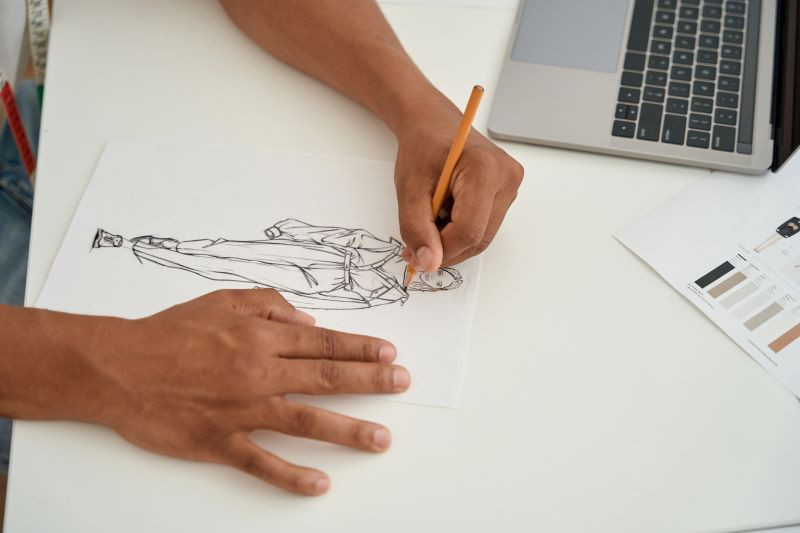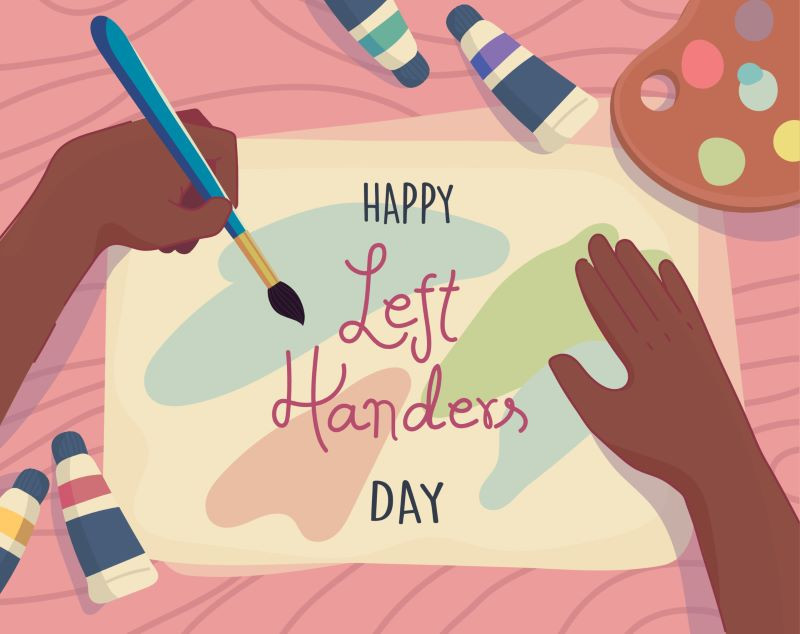Why Are Only 10% of People Left-Handed?

©️ Freepik
Left-handedness, affecting roughly 10% of the global population, is a fascinating quirk of human biology.
Lefties have long captured curiosity, facing both challenges and supposed advantages in a right-handed world. There is even an International Left-Handers Day dedicated to these people.
This article dives into the science and societal impact of left-handedness, exploring its prevalence, origins, and unique characteristics.
Why So Few Lefties? Left-Handedness Prevalence
The vast majority of people, around 90%, favor their right hand. This lopsided distribution remains a bit of a mystery, but research suggests a complex interplay of genetics and environmental factors.
Studies have identified rare genetic variants associated with left-handedness, particularly in a gene called TUBB4B which influences brain development. However, these genes alone don’t explain the full picture. Environmental factors like prenatal hormones and birth order might also play a role.

Nature vs. Nurture: Genetics and Brain Hemispheres
The dominance of one hand is linked to brain asymmetry. In most people, the left hemisphere controls language and logic, while the right handles spatial awareness and creativity.
In lefties, this lateralization can be less pronounced, with both hemispheres sharing responsibilities. This might explain some proposed cognitive advantages for left-handers, such as enhanced spatial reasoning or artistic ability – though research findings on these are mixed.
Historical Perceptions
Left-handedness hasn’t always been seen as neutral. The Latin word for “left” is “sinister,” and historically, left-handedness was associated with bad luck or even evil. Thankfully, these views have largely faded. Today, left-handedness is increasingly celebrated for its unique perspective and potential benefits.
Left-Handedness Misconceptions
Many myths surround left-handedness. One common misconception is that it’s linked to learning difficulties. Studies have shown no such connection, and forcing left-handed children to use their right hand can actually hinder development. Another myth suggests lefties are more accident-prone, which again lacks scientific backing.

Are We Alone? Hand Preference in Animals
Interestingly, left-handedness, or paw preference, is not unique to humans. Studies have shown handedness in animals like chimpanzees, parrots, and even dogs.
This suggests a deeper evolutionary basis for lateralization, potentially linked to improved tool use and complex behaviors.
Beyond Left or Right: Ambidexterity and Mixed-Handedness
Not everyone falls neatly into the left-handed or right-handed category. Ambidexterity, the ability to use both hands equally, is relatively rare, affecting about 1% of the population. Additionally, some people exhibit mixed-handedness, favoring one hand for certain tasks and the other for different activities.
Left-Handed Advantages in Sports
Some sports might offer a slight edge to left-handed athletes. In baseball, for example, a left-handed pitcher can be disorienting for right-handed batters. Similarly, left-handed fencers may have an advantage due to their unexpected attack angles. However, talent, training, and strategy ultimately play a bigger role in athletic success.
Famous Left-Handed People
Here is a list of famous left-handed people across various fields:
Politics and Leadership
- Barack Obama – Former President of the United States
- Bill Clinton – Former President of the United States
- George H.W. Bush – Former President of the United States
- Ronald Reagan – Former President of the United States
- Winston Churchill – Former British Prime Minister
- Benjamin Franklin – Founding Father of the United States
Science and Innovation
- Albert Einstein – Theoretical physicist
- Isaac Newton – Mathematician and physicist
- Marie Curie – Physicist and chemist, Nobel Prize winner

Arts and Literature
- Leonardo da Vinci – Renaissance artist and polymath
- Michelangelo – Renaissance sculptor and painter
- Pablo Picasso – Painter and sculptor
- Mark Twain – Author and humorist
- H.G. Wells – Author and futurist
Entertainment
- Oprah Winfrey – Television host and media mogul
- Keanu Reeves – Actor
- Angelina Jolie – Actress and humanitarian
- Jimi Hendrix – Guitarist and singer
- Paul McCartney – Musician and member of The Beatles
- Lady Gaga – Singer and songwriter
- Emma Thompson – Actress and screenwriter
Sports
- Rafael Nadal – Professional tennis player
- Lionel Messi – Professional footballer
- Pelé – Legendary footballer
- Martina Navratilova – Tennis champion
- Billie Jean King – Tennis champion

These individuals have excelled in their respective fields, showcasing the diversity and talent among left-handed people.
Cultural Impacts of Handedness
Cultural attitudes towards handedness can vary significantly. In some societies, left-handedness might be discouraged, while others celebrate its uniqueness.
Left-handed tools and designs are becoming more common, reflecting a growing recognition of the needs of this population segment.

In conclusion, left-handedness is a fascinating aspect of human variation. While the exact reasons behind it remain under investigation, the science is shedding light on its genetics, brain correlates, and potential advantages.
As we move towards a more inclusive world, understanding and celebrating left-handedness allows for a richer tapestry of human experience.
You may also like: What Did You See First? It Can Tell Who You Are


